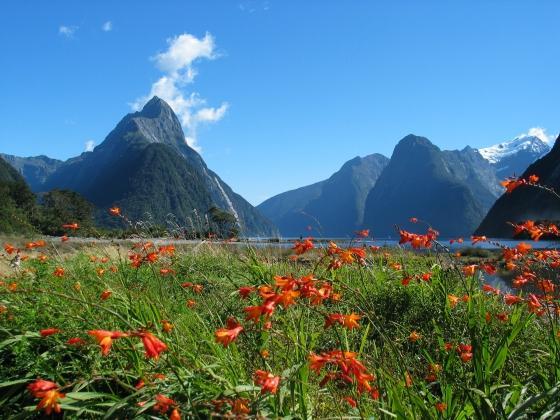“A windy spring ahead with drier than normal conditions in many regions.”
 NIWA has published its climate outlook for the next three months, and the gist of it is that El Nino conditions mean we’ll be seeing more frequent south-westerly winds.
NIWA has published its climate outlook for the next three months, and the gist of it is that El Nino conditions mean we’ll be seeing more frequent south-westerly winds.
September, like August, is expected to be warmer than average, but it appears likely that after that, temperatures will revert to near-average ranges (or slightly below in some areas.
Other indicators such as rainfall are generally also predicted to be in, or just below, the near-average ranges over most of the country.
The full report, with tables, can be found here, but the text has also been reproduced below.
Overall Picture
Temperature:
Air temperatures are likely to be in the near average or below average ranges in the north and east of the North Island, but near average in other regions. Sea surface temperatures near New Zealand are expected to be somewhat below average through September-November, especially east of the country.
Rainfall, soil moisture, and stream flows:
Rainfall, soil moisture levels and streamflows are likely to be in the near normal or below normal ranges in all regions, except in the south and west of the South Island where rainfall is likely to be near normal, and soil moisture levels and streamflows are likely to be in the near normal or above normal ranges.
Regional predictions for the next three months:
Northland, Auckland, Waikato, Bay of Plenty:
Temperatures are equally likely to be in the near average or below average categories. Three-month rainfall totals are equally likely to be in the near normal or below normal ranges, as are soil moisture levels and streamflows over the season.
Central North Island, Taranaki, Wanganui, Manawatu and Wellington:
Temperatures are most likely to be in the near average category. Three-month rainfall totals and streamflows are equally likely to be in the near normal or below normal ranges. Soil moisture levels are likely to be in the near average category.
Gisborne, Hawke’s Bay, Wairarapa:
Temperatures are equally likely to be in the near average or below average categories. Three-month rainfall totals, soil moisture levels and streamflows are all likely to be in the near normal or below normal ranges.
Nelson, Marlborough, Buller:
Temperatures are most likely to be in the near average category. Rainfall, soil moisture levels and streamflows are likely to be in the below normal or near normal categories; it is very unlikely that any of these will be in the above normal range over the season as a whole.
West Coast, Alps and Foothills, Inland Otago, Southland:
Temperatures are most likely to be in the near average category. Rainfall is most likely to be in the near normal range. Soil moisture levels and streamflows are likely to be in the near normal or above normal range.
Coastal Canterbury, East Otago:
Temperatures are most likely to be in the near average category. Three-month rainfall totals are equally likely to be in the near normal or below normal ranges. Soil moisture levels and streamflows are likely to be in the below normal range, with above normal values considered very unlikely.
Background
A weak El Niño is present in the equatorial Pacific Ocean, and is predicted to persist through to the autumn of 2010. However, at this stage the atmosphere in the tropical Pacific still displays only weak El Niño conditions. Warmer than average conditions are seen in the top 100 metres throughout the equatorial Pacific Ocean, but temperatures appear to have stabilised with little change between July and August anomalies. Nevertheless, El Niño forecast models suggest some further strengthening is likely as spring progresses.
Forecasts of circulation trends in the New Zealand region show a shift to more frequent south-westerlies in the spring, as might be expected with a developing El Niño. Drier than normal conditions are suggested in many regions, indicating a heightened risk of droughts developing in parts of northern and eastern regions of both Islands over late spring and summer.